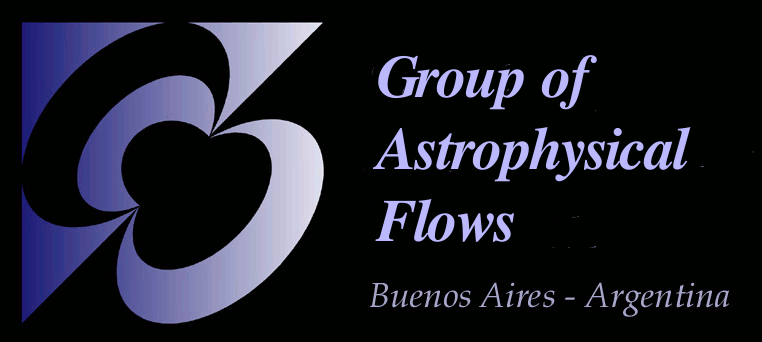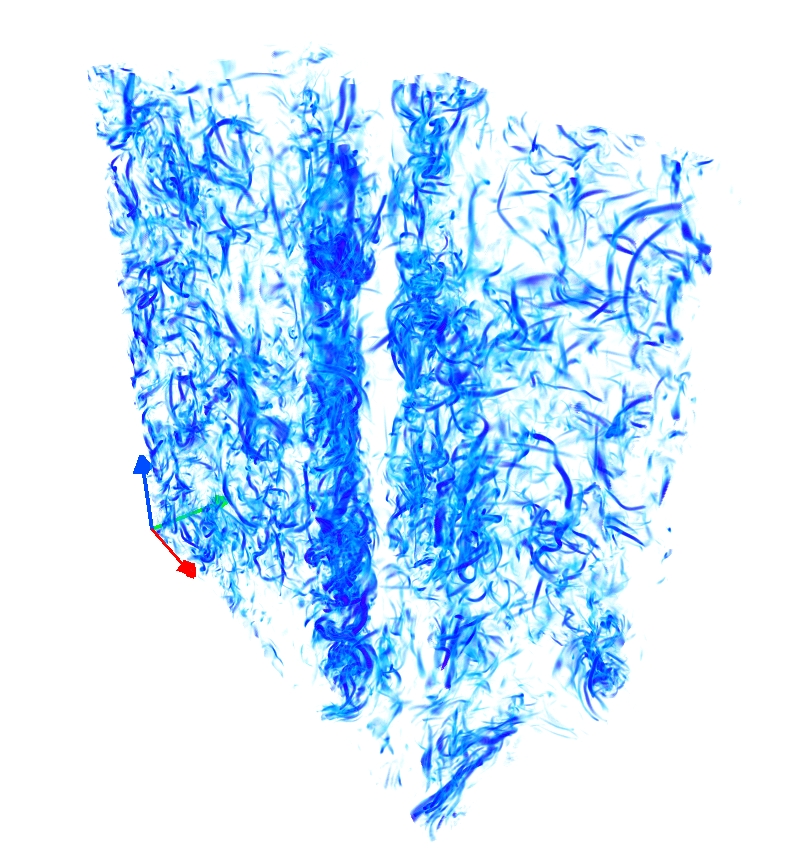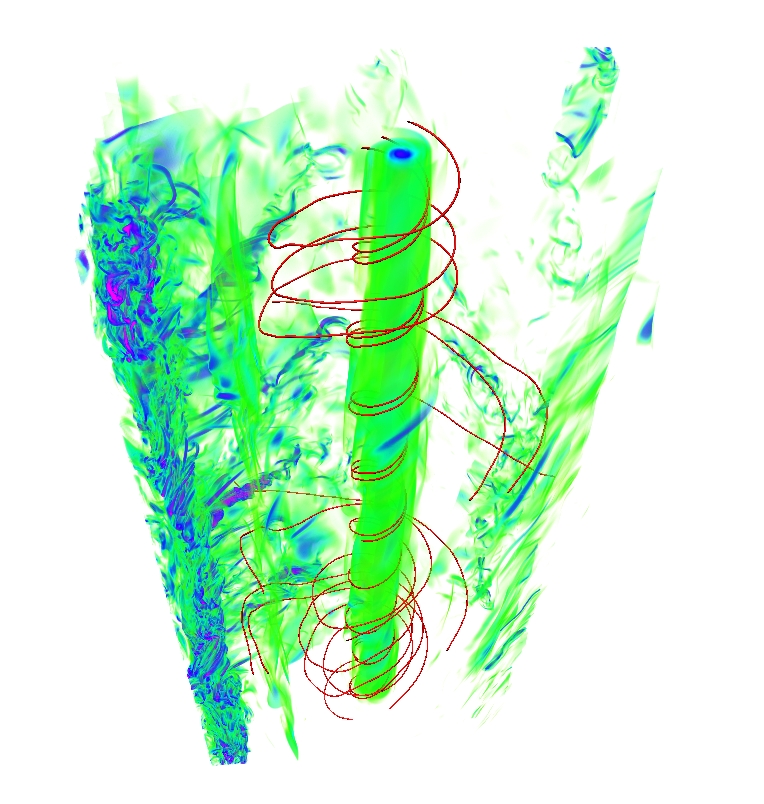
| Rotating Flows |

| Rotating Flows |
It is well known that, under the influence of a strong external agent, such as gravity, rotation or magnetic fields, several features emerge. On the one hand, waves are present in the flow (gravity, inertial or Alfvén waves, respectively), and the interactions between nonlinear eddies and waves are not fully understood. On the other hand, the flow becomes anisotropic and, in fact, tends to (although it never reaches) a near two-dimensional state, with thin layers in the case of stratification, or columnar (Taylor) vortices in the case of rotation. Since two-dimensional and three-dimensional turbulent flows have vastly different dynamics, one may ask in what way the three-dimensional dynamics of a flow under such circumstances is altered, and in what way it may possibly be linked to the much simpler two-dimensional case. The figure below shows vorticity intensity in a numerical simulation of a (non-helical) rotating flow, and gives an example of the development of columnar structures in the flow:

In recent years, our group has studied the interplay between helicity and rotation with special emphasis on atmospheric and geophysical applications. Using massive numerical simulations, we showed that small-scale structures and their intermittency properties differ according to whether helicity is present or not, in particular with respect to the emergence of Beltrami core vortices (BCVs), that are laminar helical vertical vortices. In the presence of helicity, the flow develops helical columnar structures (the BCVs) that are laminar and live for long times. The following figure shows an example in a high resolution numerical simulation of a helical rotating turbulent flow (lines in red are velocity field lines):

Using massive numerical simulations, we also showed that in rotating flows small-scale structures and their intermittency properties differ according to whether helicity is present or not. Current research topics include the effect of helicity and rotation in the decay of turbulent flows, and in the turbulent transport of scalar quantities.